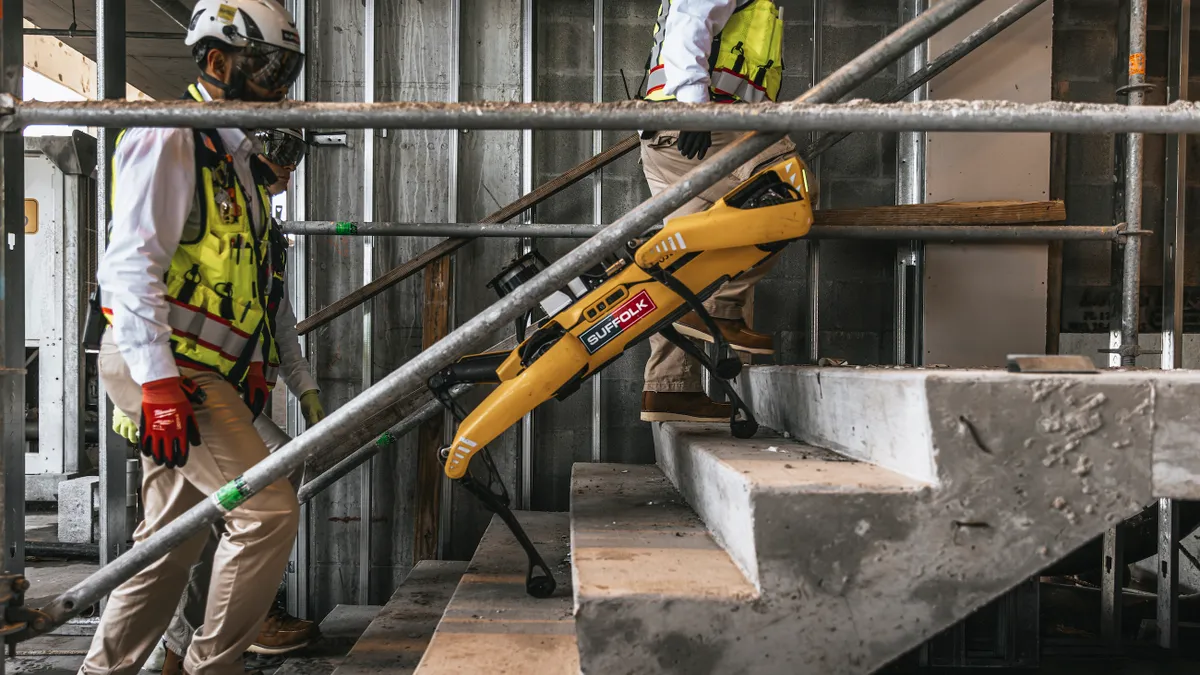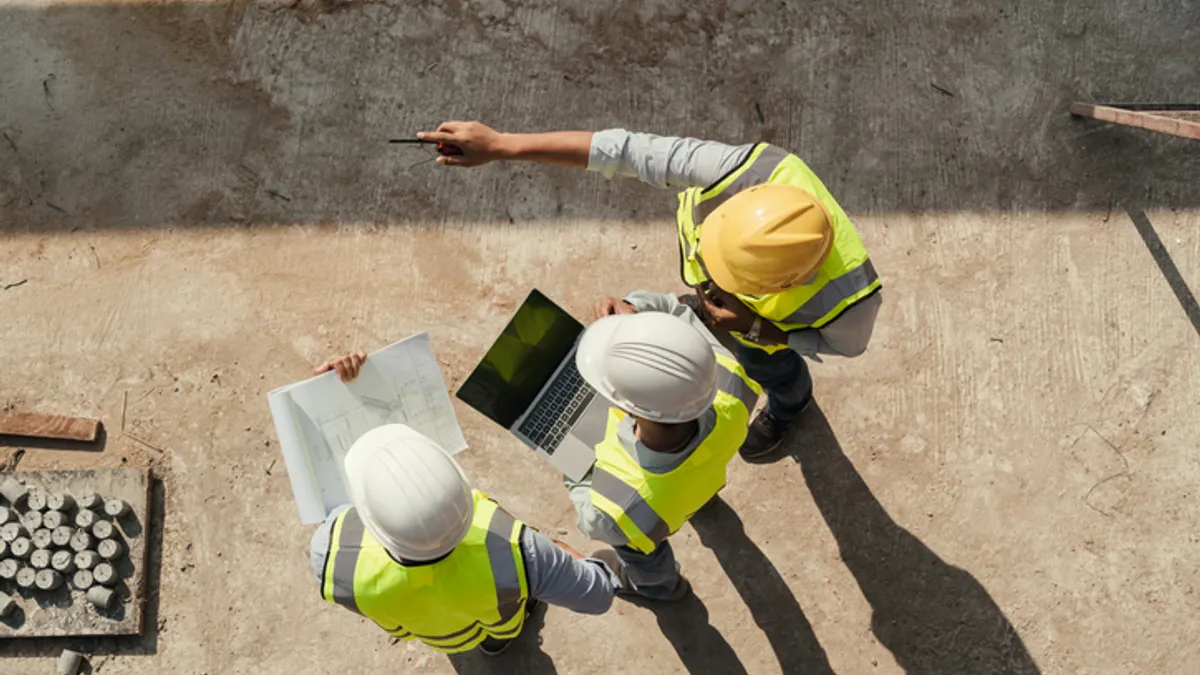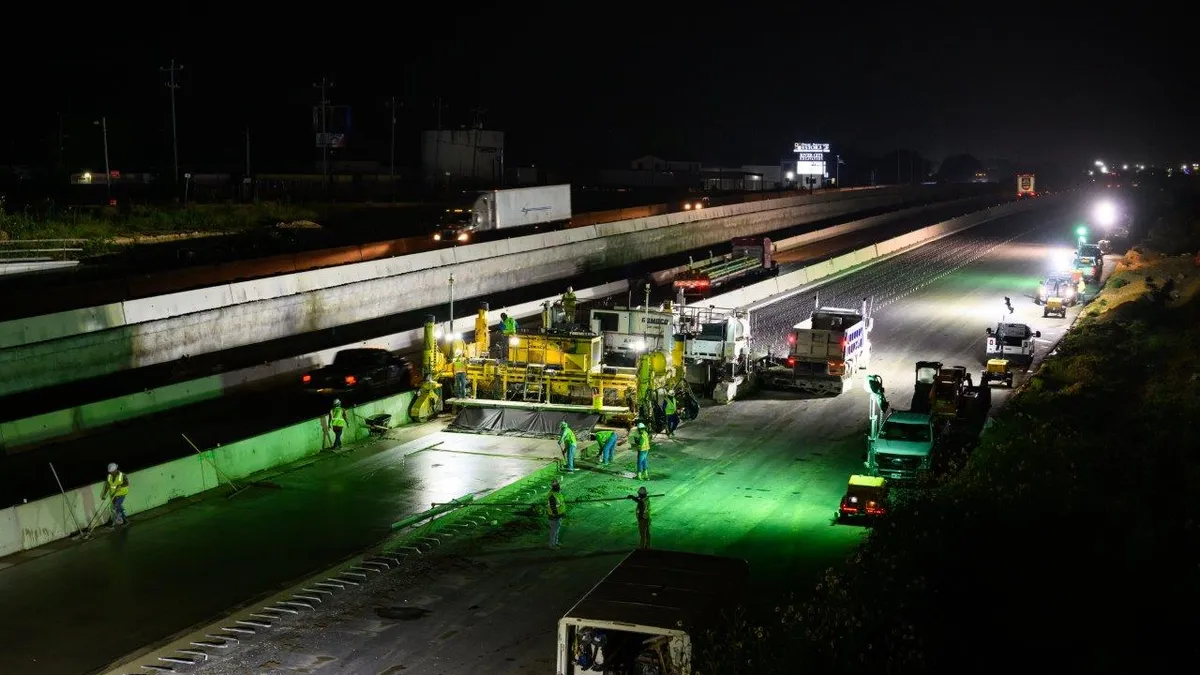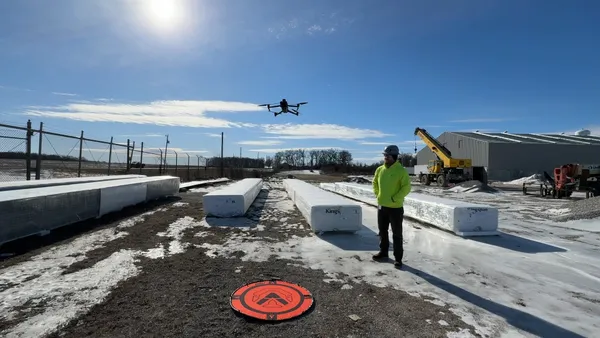Poised to reach $900 million in revenue this year, Minneapolis-based construction management firm Kraus-Anderson has major visibility into U.S. commercial and industrial job sites. As the company continues to grow, it is eager to adopt emerging technologies to stay competitive and boost efficiency and productivity. One technology that the firm is interested in exploring but that still has a long way to go before it sees widespread industry adoption: autonomous equipment.
"I don't see our pre-construction people incorporating a lot of thought about autonomous vehicles into construction," said Tom Emison, Kraus-Anderson vice president of strategy and innovation. "Margins are still so thin in the general building community that real research and development of that type rarely finds its way into our projects."
As Ford, Volvo, Tesla, Google and others make headlines in their race to put driverless vehicles on the road, adoption of similar autonomous technology for construction has been slow. That's not for a lack of products and systems that bring an unprecedented level of automation to previously man-powered tasks. Machine learning and guidance, telematics and remote control are among the technologies that are becoming available to the construction sector from an applications standpoint.
Autonomous technology for construction promises safer working conditions, improved cost containment from optimized fuel consumption and operations, and even the development of new job classes as operators leave the cab to pilot equipment remotely or engage in machine data analysis and refinement instead of conventional dirt and materials movement and construction. Yet contractors and equipment manufacturers agree the sector is likely to lag mining and agriculture when it comes to going full auto.
Complicated job sites hinder artificial intelligence
One reason autonomous technology is slow to take off is because construction sites largely lack the more focused range of predictable, repetitive tasks over defined topographies that agriculture and mining enjoy. GPS has become refined enough to locate both man and machine in motion or at idle, and telematics can provide builders with critical information on fuel consumption and other equipment and metrics. However, rapidly changing job site conditions can hinder full-scale, driverless deployment of heavy equipment.
That's not to say basic autonomy isn't yet finding its way into construction equipment. Blade control on bulldozers uses machine learning to consistently optimize the angle of attack, backhoes feature return to dig automation, and even rider comfort control (available for more than a decade) are examples of technology assuming repetitive tasks or otherwise increasing efficiency for operators, even if the machine isn't in full control.
"There’s still quite a jump to take us from semi-autonomous equipment functions like blade control, implement control and guidance to full driverless autonomy," said Brad Stemper, solutions marketing manager for Racine, WI-based CASE Construction Equipment. "Ag may find its way down that road more quickly because it is doing a certain job for a specific area. Construction equipment still needs people to understand the conditions that are highly unknown and change rapidly and frequently on the construction site."
Several years ago, Stemper was part of a technical services group at CASE working on autonomous vehicles and remote operation with the U.S. Navy to remove unexploded ordinance from a bomb field. That kind of application — removing construction operators from hazardous conditions — could be a logical entry point for autonomous equipment such as driverless vehicles.
Safety as a primary motivator
From early on, autonomous operation has been geared toward safety and security to put operators out of harm’s way and to manage machines remotely or autonomously to do the heavy lifting. As the industry evolves in its approach to new technology, Stemper and others anticipate that numerous other applications for autonomous operation will emerge, specifically for the ability to achieve the levels of efficiency and consistency of operation possible with autonomous equipment.
At Balfour Beatty Construction, based in Dallas, the company's rail division is exploring a range of truck-based technologies that can also be fitted to trains for track inspection. Developed in partnership with U.K.-based Zetica Ltd., the Balfour Beatty Railroad Asset Scanning Car Pod is a multi-sensor, road-rail, vehicle-based inspection system that comprises track geometry, laser scanning, ground penetrating radar and video inspection systems at speeds of up to 30 miles per hour. RASC Pod integrates a variety of technologies onto a single platform, some of which can be run with minimal human intervention.
"We're always looking for opportunities to be more efficient," said Matt Averitt, Balfour Beatty director of public relations, of the company's forays into autonomous equipment. "Safety is always a huge driving factor when it comes to full fleet adoptions."
A push toward improving operator safety industry-wide has led to the recent development of driverless crash trucks now in deployment with on-road and highway construction crews. Designed to act as a crash cushion between distracted drivers and an active work zone, and to minimize damage to both vehicles should a crash occur, crash trucks until recently required a live operator.
Driverless technology developed by Fort Walton Beach, FL-based Micro Systems is currently in a pilot program with Coopersburg, PA-based Royal Truck & Equipment to allow crash trucks to follow a lead vehicle completely unmanned. "Any time a driver can be removed from vehicles in a dangerous situation and there's nobody inside to receive damage or injuries is the measurement of success," said Royal Truck & Equipment president Rob Roy.
Steady progression to driverless
Jason Anetsberger, a senior product manager for Rolling Meadows, IL–based Komatsu America Corp., has witnessed the deployment of the company’s driverless hauler fleets into the mining industry over the past decade. Models like the 930E-4 electric drive hauler use guidance software for operation as well as telematics for data collection and system alerts and updates, notifying machines when they need regular maintenance or service and guiding them to a repair shop.
With driverless technology already a reality in mining, OEMs are steadily adding more automation to construction equipment on a continual basis with the goal of significantly reducing or altogether eliminating the need for a human operator. "If you look at where we were just three years ago compared to where we are today in construction today, the trajectory trend is clear for increased automated capability," Anetsberger said. "What that ends up looking like in the long run is part of the bright, bold future."
He cited developments including automated blade functions on bulldozers, GPS positioning and telematics that can provide data on grading, elevation, fuel efficiency, idle time, and other performance metrics as evidence of the development toward driverless in construction. Komatsu has even developed systems allowing for remote control operation of its bulldozers. Introduced in May 2016, it is still too early to determine what market traction the firm's D155AXi-8 RC (Radio Control) crawler dozer will see in the construction industry, specifically, but the 15.24-liter, 354-horsepower engine with a variable-geometry turbocharger allows remote operation over a distance of 300 feet.
"That’s quite a bit of automation in the machines that was not there just a couple of years back," Anetsberger said. "It’s deepening our understanding of productivity and percent of job completed in addition to machine health and position."
Stemper agreed, adding that today’s "heavy hitter" data sets reflecting idle time, fuel consumption and maintenance are likely to evolve toward greater automation as users dig deeper into the analytic opportunities available from machine data, and in turn use that data for improved machine learning. "Telematics is the first step in integrating greater awareness about what the machine is doing and using analytics and predictive analysis to identify new use cases as customers gain a greater awareness of what’s going on on the job site," Stemper said.
Displacement or empowerment for drivers?
Perhaps the biggest unknown is what becomes of an entire job sector of human operators should driverless technologies see major advances in construction. Even as the industry struggles with a critical shortage of skilled labor, OEMs are wary of displacing any loyal customer demographics even as technologies push those operators out of the cab and elsewhere on the job site.
"It is getting harder to find the guy that has 30 years of experience as a heavy equipment operator," Anetsberger said. "It’s part of why the equipment is becoming more tech savvy. We’re trying to empower the operator with technology to make [them] and the machine that much more capable and productive in the end."
Even if driverless vehicles and other autonomous equipment are still decades from full-scale deployment on construction sites, OEMs are likely to find a receptive audience among GCs and management firms like Kraus-Anderson that are eager to stay competitive, even as margins remain thin. "We do believe that technology will fuel our innovation as a company," Emison said. "As a result, we need to be aware of and embracing of emerging technologies as they become commercially viable for us."





















